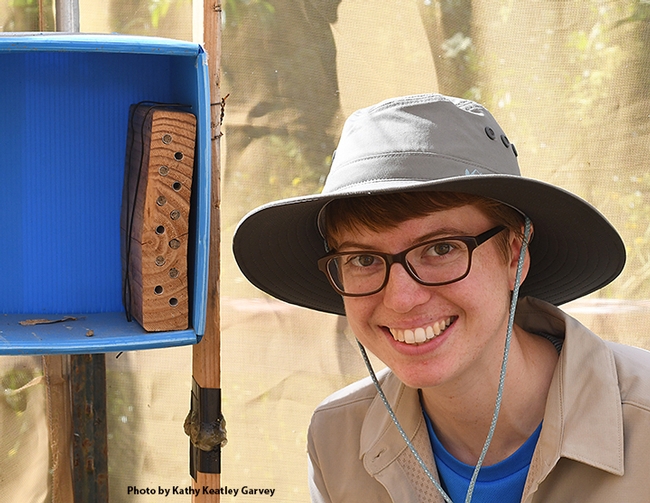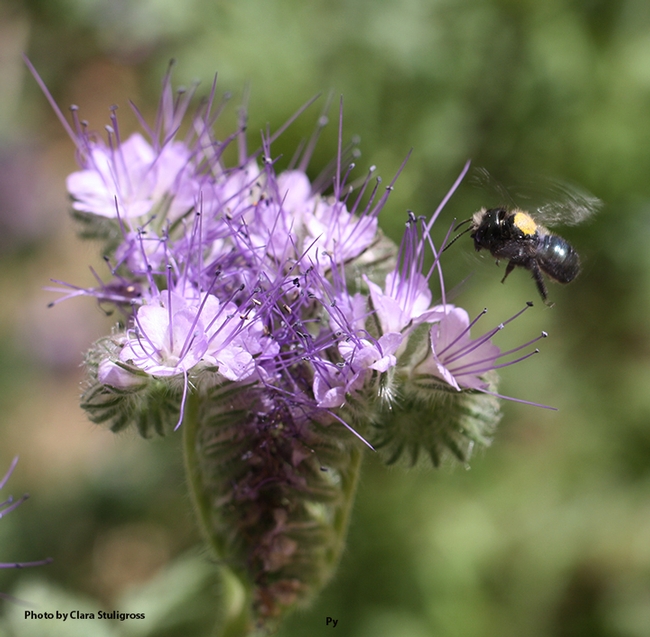- Author: Kathy Keatley Garvey

Yes, says UC Davis alumnus and research ecologist John Mola and his colleagues in a newly published article, "The Importance of Forests in Bumble Bee Biology and Conservation," the cover story in the current edition of the journal Bioscience.
"Forests are often critical bumble bee habitat," wrote Mola, a U.S. Geological Survey Mendenhall Postdoctoral Fellow based at the Fort Collins Science Center, Colorado, and a former member of the Neal Williams laboratory, UC Davis Department of Entomology and Nematology. He authored the research article with colleagues Jeremy Hemberger, a postdoctoral researcher in the Williams lab; Jade Kochanski of the University of Wisconsin, Madison; Leif Richardson of the Xerces Society for Invertebrate Conservation; and UC Davis alumnus Ian Pearse of the Fort Collins Science Center.
The cover image by Diego Delso shows a Bombus terrestris, a buff-tailed bumble bee that is one of the most numerous bumble bee species in Europe. He captured the image on a pink mulla mulla, Ptilotus exaltatus, in Estonia.
The abstract:
"Declines of many bumble bee species have raised concerns because of their importance as pollinators and potential harbingers of declines among other insect taxa. At present, bumble bee conservation is predominantly focused on midsummer flower restoration in open habitats. However, a growing body of evidence suggests that forests may play an important role in bumble bee life history. Compared with open habitats, forests and woody edges provide food resources during phenologically distinct periods, are often preferred nesting and overwintering habitats, and can offer favorable abiotic conditions in a changing climate. Future research efforts are needed in order to anticipate how ongoing changes in forests, such as overbrowsing by deer, plant invasions, and shifting canopy demographics, affect the suitability of these habitats for bumble bees. Forested habitats are increasingly appreciated in the life cycles of many bumble bees, and they deserve greater attention from those who wish to understand bumble bee populations and aid in their conservation."
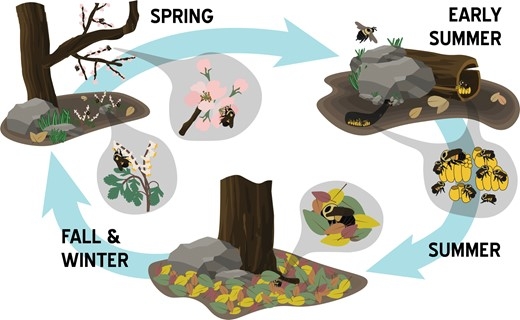
"Despite their lower numerical abundance, recent studies have shown that these phases of bumble bee life history are especially important in determining the trajectory of their populations (Crone and Williams 2016, Carvell et al. 2017)," they wrote. "Because forests in many regions contrast with open habitats in terms of their flowering phenology, structural features, and abiotic conditions, these habitats may be particularly relevant to the understudied portions of the bumble bee life cycle. When considering the bumble bee year more broadly to include early floral resources or nesting and overwintering habitat, the role of forests, forest edges, and other woody habitats becomes more central in our understanding of bumble bee biology."
They concluded: "We hope our perspective does not provide the idea that forests are required for bumble bees but instead that they offer a cost effective means to provide foraging, nesting, and overwintering habitats that are compatible with conservation goals of other organisms (Williams 2011, Bentrup et al. 2019) and may be overlooked in studies of bumble bee biology. A recurrent problem in bumble bee conservation is the lack of informed demographic models or an understanding of basic aspects of species biology (i.e., nesting and overwintering). Increasing our capacity to incorporate forests into these efforts is likely to produce rich data sets that better inform conservation efforts and lead to the development of useful demographic models."
Active in bumble bee research, Mola is an invited participant on both the Western Bumble Bee Species Status Assessment Expert Group and the Native Bee Monitoring Research Coordination Network, and is also an organizing member (since 2020) of BOMBUSS: Building Our Methods by Using Sound Science.
"The BOMBUSS mission," according to its website, "is to bring researchers working on bumble bee biology together to discuss the methodologies currently used to investigate these important pollinators. As domestication of bumble bees has expanded worldwide, so has research on this group of bees as model organisms for study, as crop pollinators, and as conservation targets. The growth of this field of study has been rapid, prompting the organizers to convene this meeting to discuss the need and potential for standardization of methods."
BOMBUSS goals are five-fold:
- to identify the areas where common methodology already exists,
- identify areas where best practices can be suggested,
- identify gaps in the literature regarding methodology,
- share knowledge and build networks for advancing our science,
- formulate plans to address the gaps through peer-reviewed publication.
Mola received his doctorate in ecology in 2019 from UC Davis. He presented his exit seminar on "Bumble Bee Movement Ecology and Response to Wildfire."
At UC Davis, Mola was a Professors for the Future Fellow, receiving a year of professional development and pedagogical training. His honors also include a 2013-2018 National Science Foundation Graduate Research Fellowship of $133,500 and a 2014-2016 UC Davis Graduate Group in Ecology Fellowship of $43,000. He won the graduate student research poster competition at the 2018 UC Davis Bee Symposium for his work on "Bumble Bee Movement and Landscape Genetics."
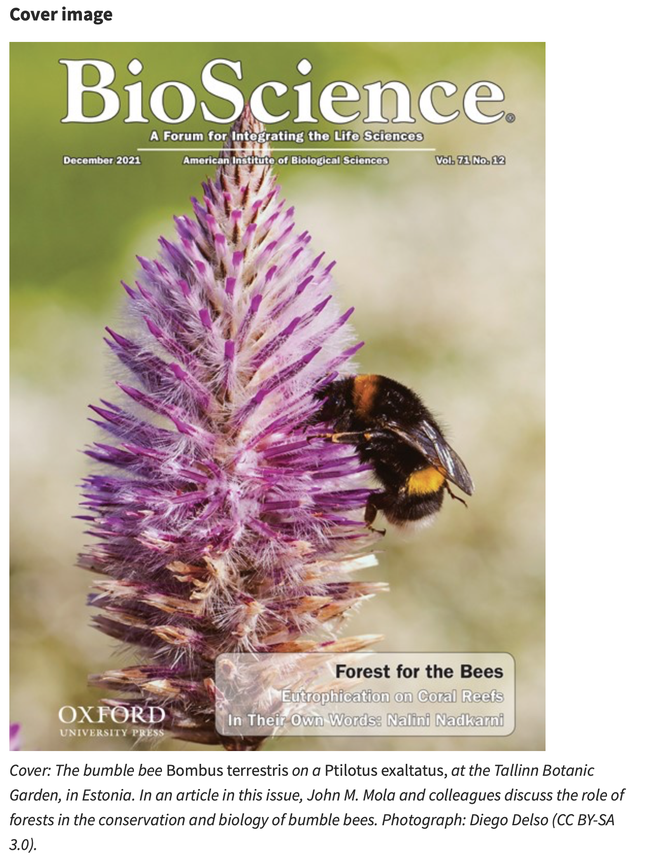
- Author: Kathy Keatley Garvey

"Imidacloprid disrupts the nerve's ability to send a normal signal, and the nervous system stops working the way it should," says the National Pesticide Information Center (NPIC).
Used in products sold in the United States since 1994, "Imidacloprid is much more toxic to insects and other invertebrates than it is to mammals and birds because it binds better to the receptors of insect nerve cells," according the NPIC's Fact Sheet.
Now a newly published, two-year UC Davis study reveals that normal exposure to imidacloprid generates a multi-generational effect on the blue orchard bee, Osmia lignaria, reducing both reproduction and population growth.
The research, "Past Insecticide Exposure Reduces Bee Reproduction and Population Growth," by doctoral ecology candidate Clara Stuligross and her co-author, major professor Neal Williams of the UC Davis Department of Entomology and Nematology, is published in the current edition of the Proceedings of the National Academy of Sciences.
The blue orchard bee, sometimes nicknamed BOB, is a native bee active in the early spring. Metallic blue in color and smaller than a honey bee, it is a solitary mason bee often managed commercially to pollinate almond orchards. The bees are also considered excellent pollinators of apple, pear and cherry trees and efficient pollinators of blueberries.
“We reveal that pesticide exposure, both directly to foraging bees and via carryover effects from past exposure, dramatically reduced bee reproduction, which reduced population growth,” they wrote. “Carryover effects reduced bee reproduction by 20% beyond current impacts on foraging bees, exacerbating the negative impact on population growth rates. This indicates that bees may require multiple generations to recover from a single pesticide exposure; thus, carryover effects must be considered in risk assessment and conservation management.”
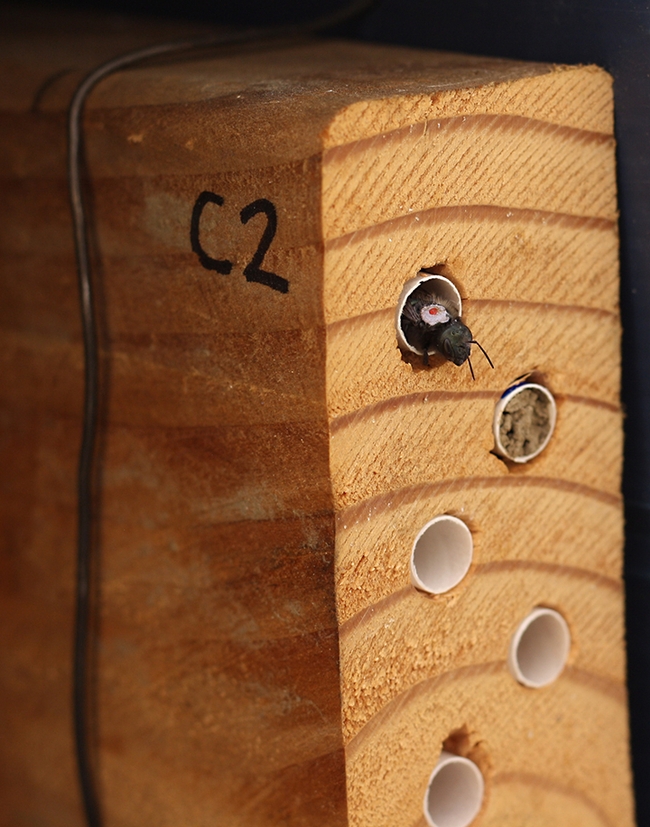
The scientists investigated the effects of current exposure and the carryover effects of past insecticide exposure on the individual vital rates and population growth of the bee. “Bees in flight cages freely foraged on wildflowers, some treated with the common insecticide, imidacloprid, in a fully crossed design over two years, with insecticide exposure or no exposure in each year,” they wrote.
They found that “insecticide exposure directly to foraging adults and via carryover effects from past exposure reduced reproduction. Repeated exposure across two years additively impaired individual performance, leading to a nearly fourfold reduction in bee population growth.”
“Exposure to even a single insecticide application can have persistent effects on vital rates and can reduce population growth for multiple generations,” they wrote. “Carryover effects had profound implications for population persistence and must be considered in risk assessment, conservation, and management decisions for pollinators to mitigate the effects of insecticide exposure.
The 2018-2019 study took place on the grounds of the Harry H. Laidlaw Jr. Honey Bee Research Facility, located west of the central UC Davis campus.
The researchers tested only imidacloprid, a commonly used pesticide related to nicotine, and in exposures that bees would normally encounter in an agricultural field or orchard. The bees visited three species of wildflowers: lacy phacelia (Phacelia tanacetifolia), great valley phacelia (Phacelia ciliata), and purple Chinese houses (Collinsia heterophylla).
Any other adverse effects of the pesticide exposure? “We also saw effects of current pesticide exposure on offspring sex ratio, probability of nest initiation, and nest construction rate,” Stuligross said.
Financial Support. The study drew financial support from Stuligross' National Science Foundation Graduate Research Fellowship; her UC Davis Henry A. Jastro Graduate Research Award, and her UC Davis Ecology Graduate Research Fellowship, as well as from the UC Davis Department of Entomology and Nematology through the Harry H. Laidlaw Jr. Bee Research Facility and the Laidlaw Endowment.
The next step? “We are interested in studying how this type of pesticide exposure affects bees in a full field setting, where bees are exposed to multiple stressors simultaneously," she said.
Unlike honey bees, the reproductive rate of the blue orchard bee is low. A queen honey bee can lay about 2000 eggs a day in peak season, while the female blue orchard bee lays about 15 eggs a year.
Stuligross, who began her doctoral studies at UC Davis in 2016, holds a bachelor's degree in environmental studies (2014) from Earlham College, Richmond, Ind. “I am broadly interested in bee biology, population ecology, and understanding how bees interact with their environments in natural and managed ecosystems,” she says. “I use a combination of landscape, field cage, and lab experiments to study these interactions at different scales.”
Stuligross previously worked as a science educator at Carnegie Museum of Natural History, a research technician with Rufus Isaacs at Michigan State University studying bee communities in blueberry fields. I was also an undergraduate researcher with T'ai Roulston, Rosemary Malfi, and Wendy Tori studying bumble bee foraging, parasitism, and ecological niche modeling.
Stuligross and Williams assisted with the production of the KQED Deep Look video, "Watch This Bee Build her Bee-Jeweled Nest," posted Aug. 7, 2018. The video notes that most of the 4000 bees in North America are solitary. Mason bees, or "builder bees," build their nests with mud, and provision their nests with nectar and pollen for their offspring.
In nature, the blue orchard bees use hollow tubes, such as reeds. The UC Davis lab uses wood blocks or "bee condos" drilled with specially sized holes, each filled with a removable six-inch-long paper straw. Almond growers who manage blue orchard bees provide drilled wood blocks in their orchards. The bee condos are also popular among backyard gardeners.
More Information:
- Pesticides Can Affect Multiple Generations of Bees (UC Davis story by Amy Quinton)
- The Blue Orchard Mason Bee (U.S. Forest Service website, article by Beatriz Moisset and Vicki Wojcik, Pollinator Partnership)
- Imidacloprid Fact Sheet, National Pesticide Information Center
- Imidacloprid, Wikipedia
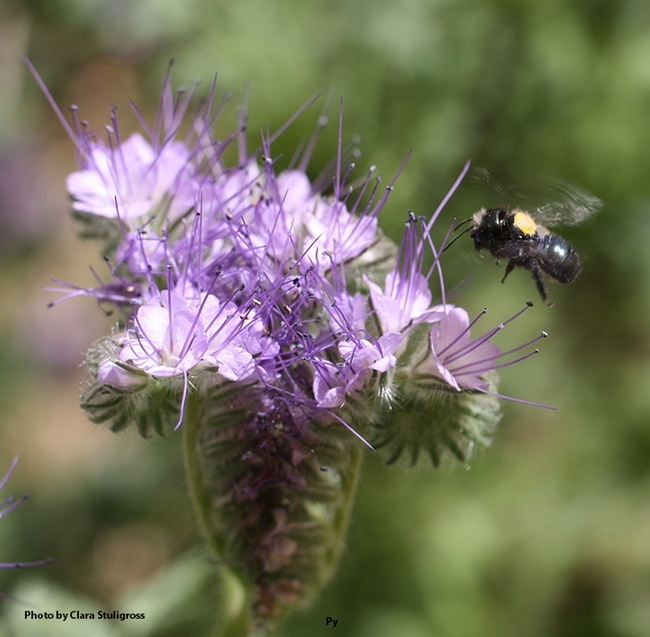
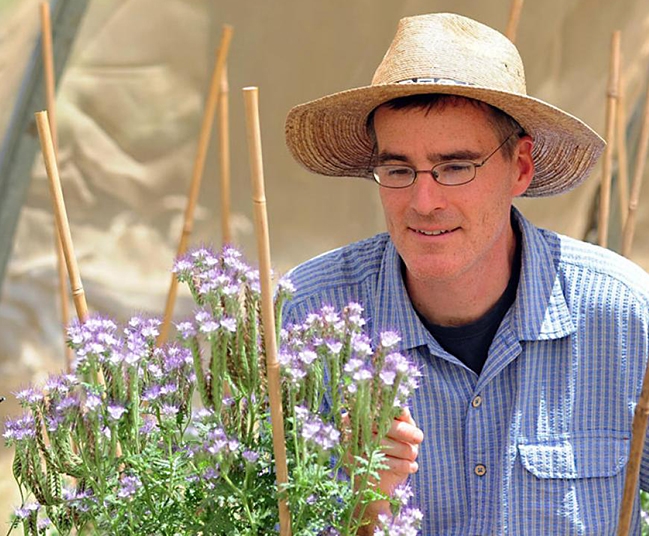
- Author: Kathy Keatley Garvey
Ah, Saturday, April 17. It's the 107th Annual UC Davis Picnic Day! What's a picnic without bugs?
This year's event, all virtual, is themed "Discovering Silver Linings," and you can do just that by watching the pre-recorded videos and by participating in the Zoom sessions. Check out the Picnic Day schedule of events which include entomological exhibits and talks from the UC Davis Department of Entomology and Nematology, Bohart Museum of Entomology and the UC Davis Graduate Student Association.
New additions to the line-up (featured on the Bohart Museum of Entomology website), involve what you could call "The good, the bad and the bugly." Blue orchard bees, tsetse flies and mosquitoes are spotlighted in UC Davis research-based videos created by KQED's Deep Look series and presented by PBS Digital Studios. Each runs about four minutes.
Here are the KQED productions:
- Watch this Bee Build Her Bee-Jeweled Nest, featuring blue orchard bees, the project of UC Davis doctoral student Clara Stuligross.
- A Tsetse Fly Births One Enormous Milk-Fed Baby, showcasing the work of medical entomologist Geoffrey Attardo, assistant professor, UC Davis Department of Entomology and Nematology.
- This Dangerous Mosquito Lays Her Armored Eggs--in Your House, involving the Aedes aegypti mosquitoes that the Attardo lab studies.
Clara Stuligross, Doctoral Student
They exposed the bees to the neonicotinoid insecticide imidacloprid, widely used in agriculture, and found that the combined threats—imidacloprid exposure and the loss of flowering plants—reduced the bee's reproduction by 57 percent, resulting in fewer female offspring.
Other scientists have conducted similar research on honey bees, but this is the first comparable research on wild bees in field or semi-field conditions. The blue orchard bee, nicknamed BOB, is a dark metallic mason bee, smaller than a honey bee. It is prized for pollinating almond, apple, plum, pear, and peach trees. California almond growers often set up bee boxes or "bee condos" for blue orchard bees to aid in honey bee pollination. In the wild, the bees nest in reeds or natural holes.
Update? "We are currently working on a follow-up study to investigate potential carryover effects of past insecticide exposure on the same bee population, as well as how repeated pesticide exposure over multiple years impacts bee population growth," Stuligross said today.
Geoffrey Attardo, Medical Entomologist-Geneticist 
What many people do not know: "Female tsetse flies carry their young in an adapted uterus for the entirety of their immature development and provide their complete nutritional requirements via the synthesis and secretion of a milk like substance," Attardo says.
Attardo led landmark research published Sept. 2, 2019 in the journal Genome Biology that provides new insight into the genomics of the tsetse fly. The researchers compared and analyzed the genomes of six species of tsetse flies. Their research could lead to better insights into disease prevention and control.
The Deep Look episode on mosquitoes, "This Dangerous Mosquito Lays Her Armored Eggs-- in Your House," deals with the ability of Aedes aegypti eggs to survive out of water. Wrote the producers: "The Aedes aegypti mosquito, which can transmit dengue fever and Zika, makes a meal of us around our homes. And her eggs are hardy. They can dry out, but remain alive for months, waiting for a little water so they can hatch into squiggly larvae."
- Author: Kathy Keatley Garvey
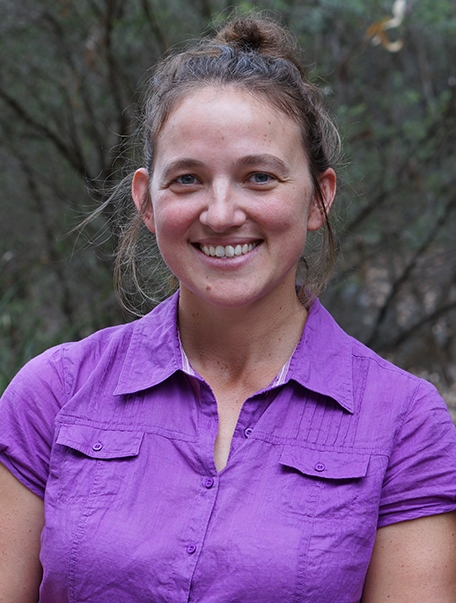
You should also think about "pollination journeys."
On Wednesday, March 10, community ecologist Romina Rader from the University of New England's School of Environmental and Rural Science will speak on "The Journey to Effective Pollination" at the UC Davis Department of Entomology and Nematology's virtual seminar.
Professor and pollination ecologist Neal Williams is the host. Click here to register to attend the 4:10 p.m. seminar. This is the last of the winter seminars.
Rader, an associate professor, says she is broadly interested in pollination ecology, landscape ecology and plant–animal interactions in natural and human-modified landscapes. She is currently working on projects that investigate the ways in which plant and animal biodiversity respond to global change and the performance of wild and managed insect pollinators in horticultural crops.
She writes on her website: "I am a community ecologist and my research focuses on plant–animal interactions in natural and human-modified landscapes. I am interested generally in the ecology of plants and animals in different types of habitats and landscapes and how they respond to differing management practices and global change. My current projects relate to wild and managed insect pollinators, their efficiency at pollinating horticultural crops and finding ways to improve fruit yield and quality by understanding their life history needs."
Rader holds a bachelor of environmental science (1998) from the University of New South Wales, Sydney, Australia. She obtained both her master's degree (2005) and doctorate (2011) from James Cook University, Cairns, Australia. Her master's thesis: "Vertical Distribution, Resource and Space Use in a Tropical Rainforest Small Mammal Community." For her doctorate: "The Provision of Pollination Ecosystem Services to Agro-Ecosystems by a Diverse Assemblage of Wild, Unmanaged Insect Taxa." She won a 2017- 2020 Australian Research Council Discovery Early Career Researcher Award.
Among her most recent journal publications:
- S.A.E.C. Wijesinghe, L.J. Evans, L. Kirkland & R. Rader 2020, ‘A global review of watermelon pollination biology and ecology: The increasing importance of seedless cultivars,' Scientia Horticulturae, vol. 271, pp. 109493,
https://doi.org/10.1016/j.scienta.2020.109493 - Heidi Kolkert, Rhiannon Smith, Romina Rader & Nick Reid 2020, ‘Insectivorous bats foraging in cotton crop interiors is driven by moon illumination and insect abundance, but diversity benefits from woody vegetation cover,' Agriculture, Ecosystems & Environment, vol. 302, pp. 107068,
https://www.sciencedirect.com/science/article/abs/pii/S0167880920302541 - Jamie R. Stavert, Charlie Bailey, Lindsey Kirkland & Romina Rader 2020, ‘Pollen tube growth from multiple pollinator visits more accurately quantifies pollinator performance and plant reproduction,' Scientific Reports, vol. 10, no. 1,
https://www.nature.com/articles/s41598-020-73637-5 - Liam K. Kendall, Vesna Gagic, Lisa J. Evans, Brian T. Cutting & Jessica Scalzo, Romina Rader. 2020, ‘Self-compatible blueberry cultivars require fewer floral visits to maximize fruit production than a partially self-incompatible cultivar,' Journal of Applied Ecology,
https://besjournals.onlinelibrary.wiley.com/doi/abs/10.1111/1365-2664.13751 - Vesna Gagic, Lindsey Kirkland, Liam K. Kendall, Jeremy Jones & Jeffrey Kirkland Romina Rader 2020, ‘Understanding pollinator foraging behaviour and transition rates between flowers is important to maximize seed set in hybrid crops,' Apidologie,
https://link.springer.com/article/10.1007/s13592-020-00800-2
Agricultural Extension specialist Ian Grettenberger coordinates the seminars. For technical issues, contact him at imgrettenberger@ucdavis.edu.
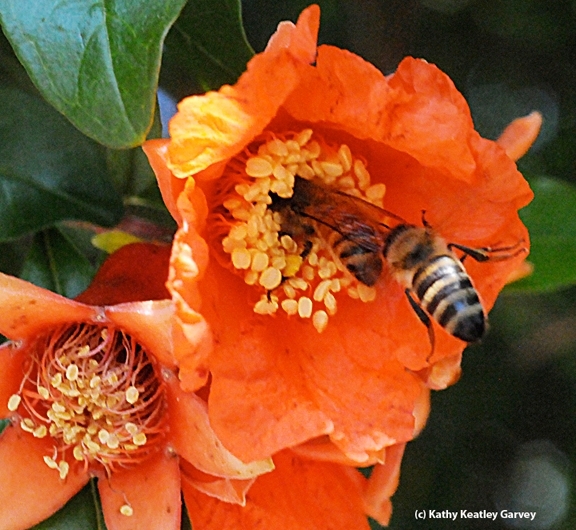
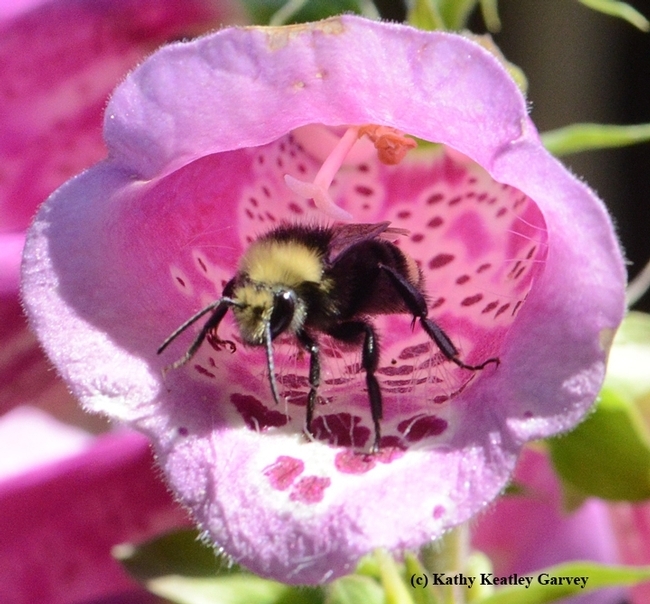
- Author: Kathy Keatley Garvey
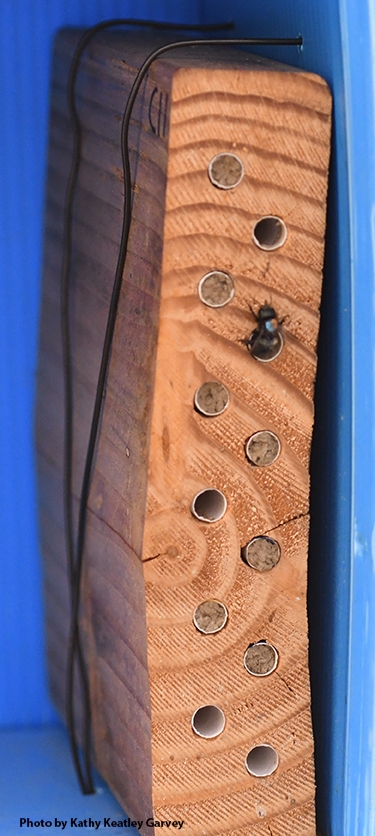
Lead author and doctoral student Clara Stuligross teamed with her major professor, pollination ecologist Neal Williams of the UC Davis Department of Entomology and Nematology, to publish Pesticide and Resource Stressors Additively Impair Wild Bee Reproduction, in the journal Proceedings of the Royal Society B.
They exposed the bees to the neonicotinoid insecticide imidacloprid, widely used in agriculture, and found that the combined threats—imidacloprid exposure and the loss of flowering plants—reduced the bee's reproduction by 57 percent, resulting in fewer female offspring.
Of the two stressors—food scarcity and pesticide exposure—pesticide exposure showed the great impact on nesting activity and the number of offspring produced, they said.
Other scientists have conducted similar research on honey bees, but this is the first comparable research on wild bees in field or semi-field conditions.
The blue orchard bee, nicknamed BOB, is a dark metallic mason bee, smaller than a honey bee. It is prized for pollinating almond, apple, plum, pear, and peach trees. California almond growers often set up bee boxes or "bee condos" for blue orchard bees to aid in honey bee pollination. In the wild, the bees nest in reeds or natural holes.
“Bees and other beneficial insects experience multiple stressors within agricultural landscapes that act together to impact their health and diminish their ability to deliver the ecosystem services on which human food supplies depend,” Stuligross and Williams wrote in their abstract. “Disentangling the effects of coupled stressors is a primary challenge for understanding how to promote their populations and ensure robust pollination and other ecosystem services.”
To study the survival, nesting and reproduction of the blue orchard bee, they set up nesting females in large flight cages, some with high densities of wildflowers and others with low densities that were treated “with or without the common insecticide, imidacloprid.” Bees are commonly exposed to insecticides when they forage on treated flowers.
“Pesticides and resource limitation acted additively to dramatically reduce reproduction in free-flying bees,” they wrote in their abstract. “Our results emphasize the importance of considering multiple drivers to inform population persistence, management, and risk assessment for the long-term sustainability of food production and natural ecosystems.”

Key factors in affecting bee reproduction are the probability that females will nest and the total number of offspring they have. The UC Davis research found that pesticide-exposed and resource-deprived female bees delayed the onset of nesting by 3.6 days and spent five fewer days nesting than unexposed bees.
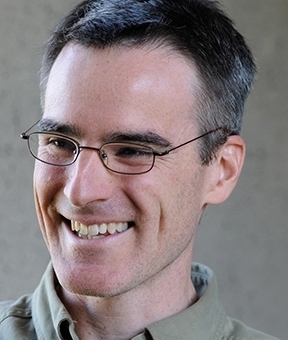
They found that only 62 percent of pesticide-exposed bees produced at least one daughter compared to 92 percent of bees not exposed to pesticides.
The research, accomplished in the spring of 2018 on the grounds of the Harry H. Laidlaw Jr. Facility west of the campus, drew support from a UC Davis Jastro Research Award, a UC Davis Ecology Graduate Research Fellowship, a National Science Foundation Graduate Research Fellowship, and the UC Davis bee biology facility
The blue orchard bee bee is one of the few native pollinators that is managed in agriculture. North America has 140 species of Osmia, according to a Pollinator Partnership (PP) article in a U. S. Forest Service publication, authored by entomologist and PP member Beatriz Moisset and PP director Vicki Wojcik. “Mason bees use clay to make partitions and to seal the entrance,” they wrote. “This unique mud-building behavior leads to their common designation as mason bees. Honey bees are very important to commercial agriculture, but native bees like the blue orchard bees are better and more efficient pollinators of native crops.”
Imidacloprid, a systemic insecticide that acts as an insect neurotoxin, is used to control sucking insects, termites, some soil insects and fleas on pets, according to National Pesticide Information Center. It mimics nicotine, toxic to insects, which is naturally found in many plants, including tobacco. More than 400 products for sale in the United States contain imidacloprid.
